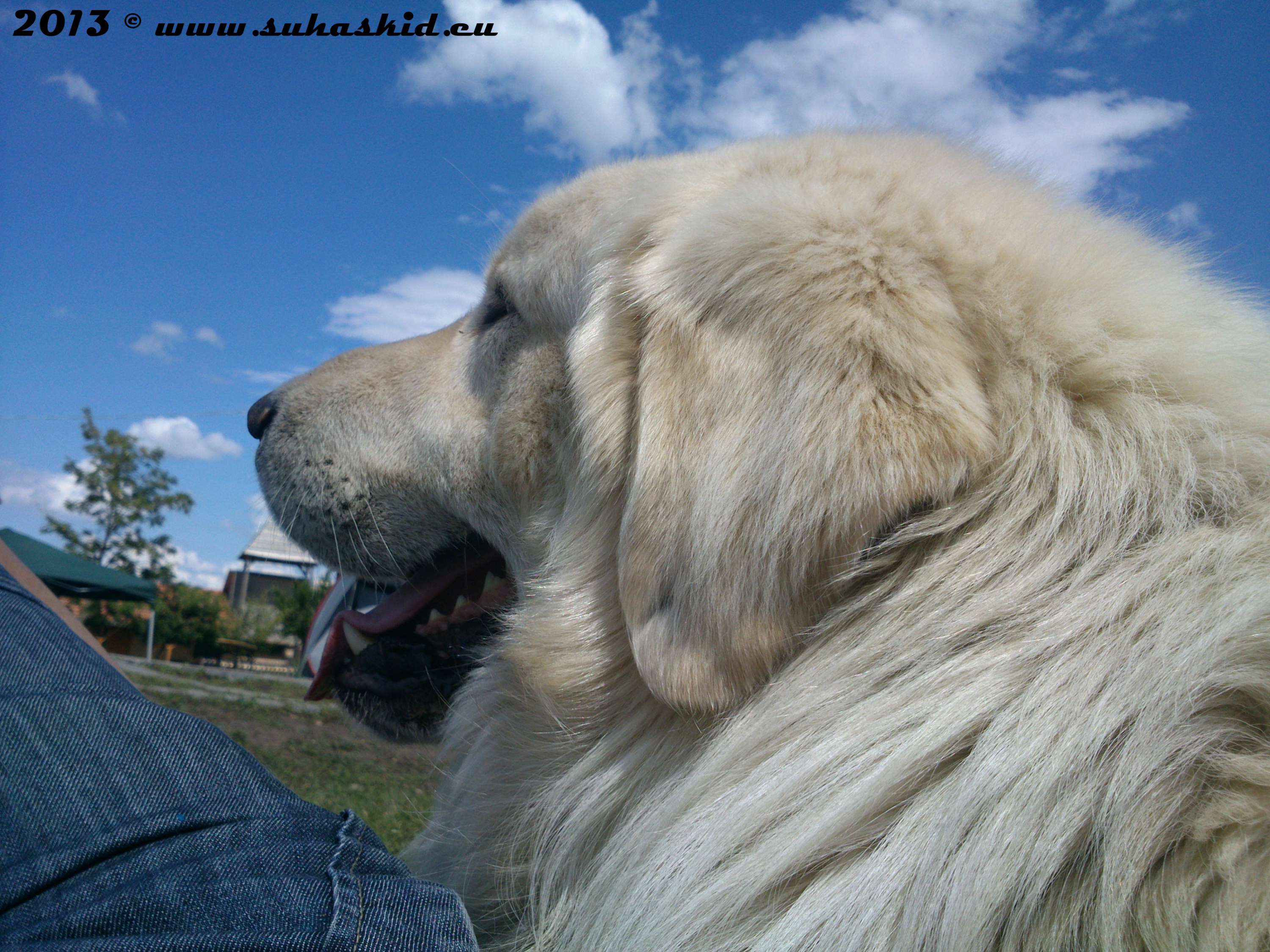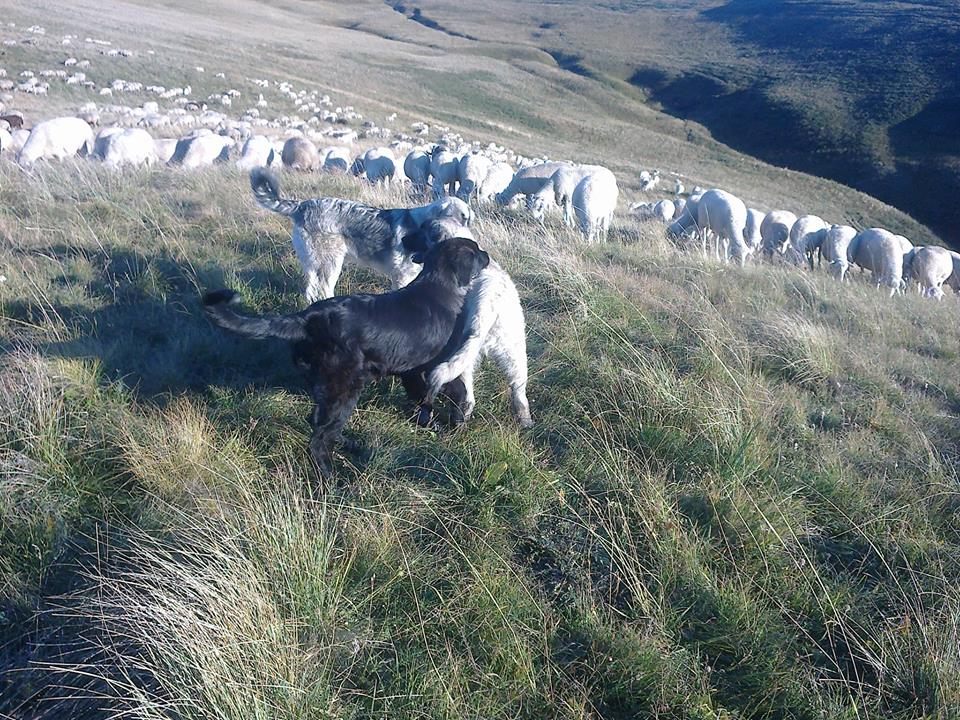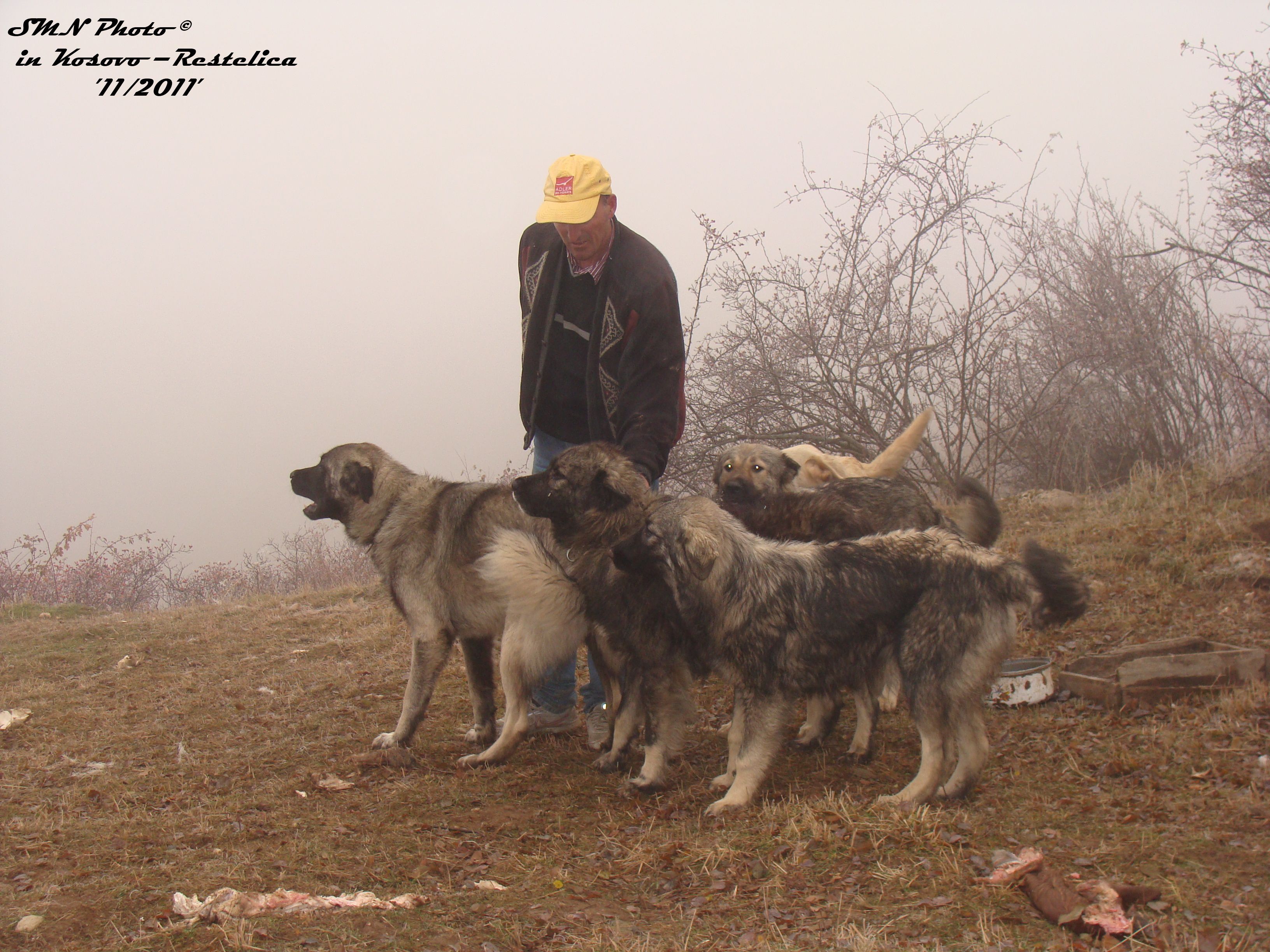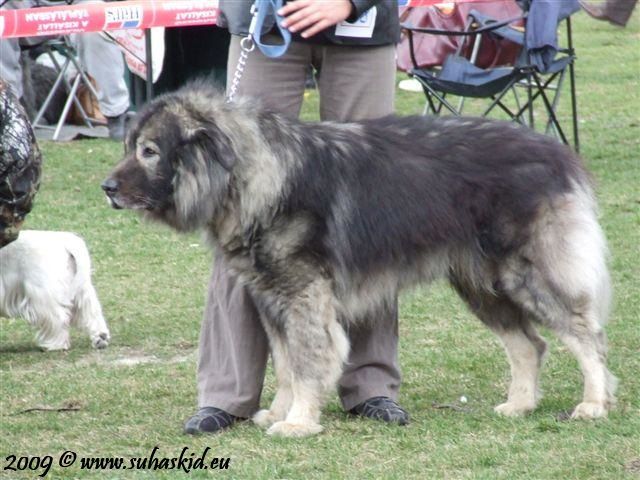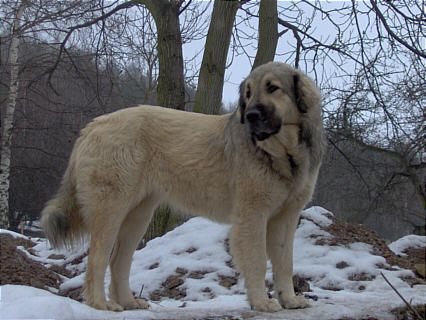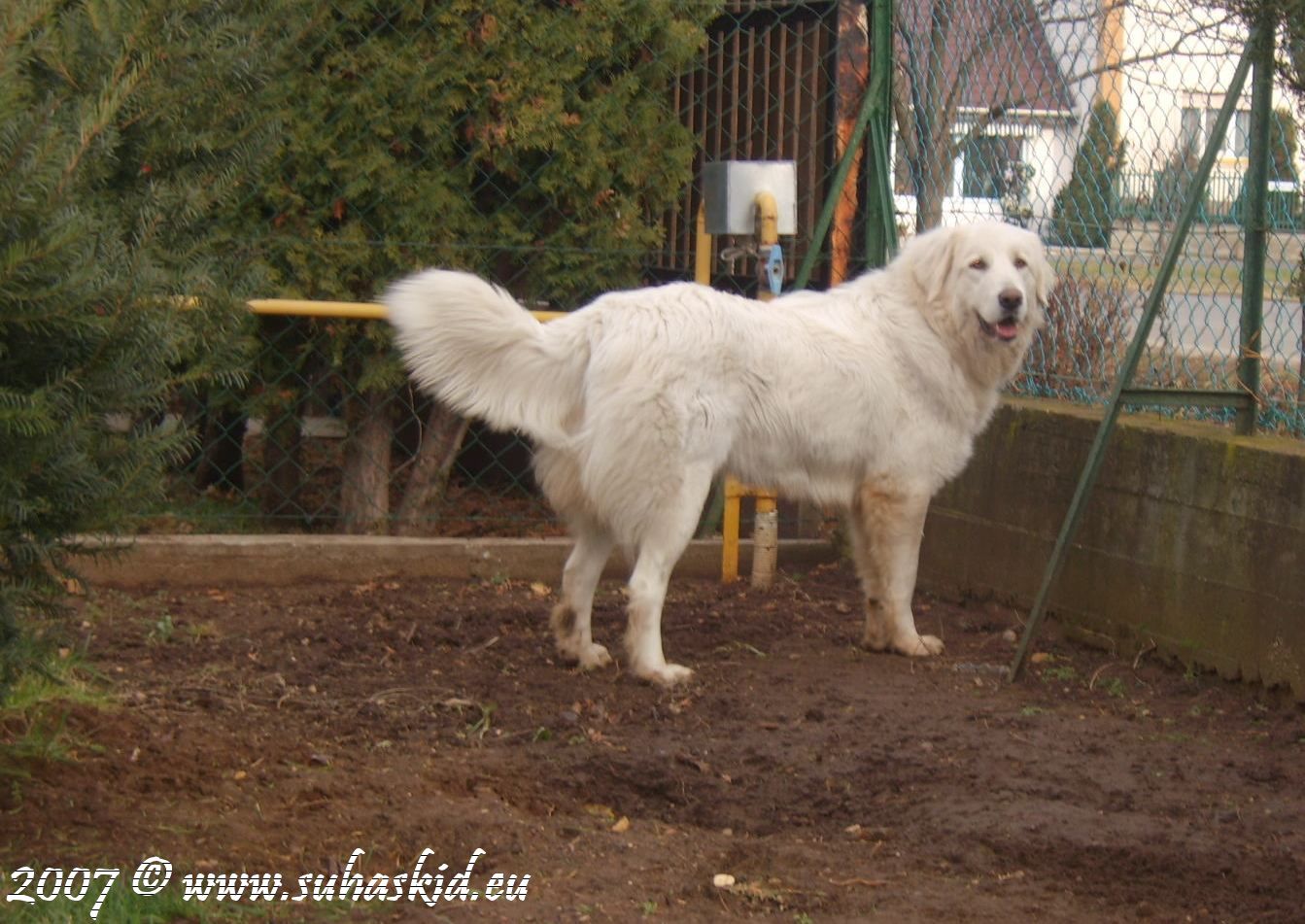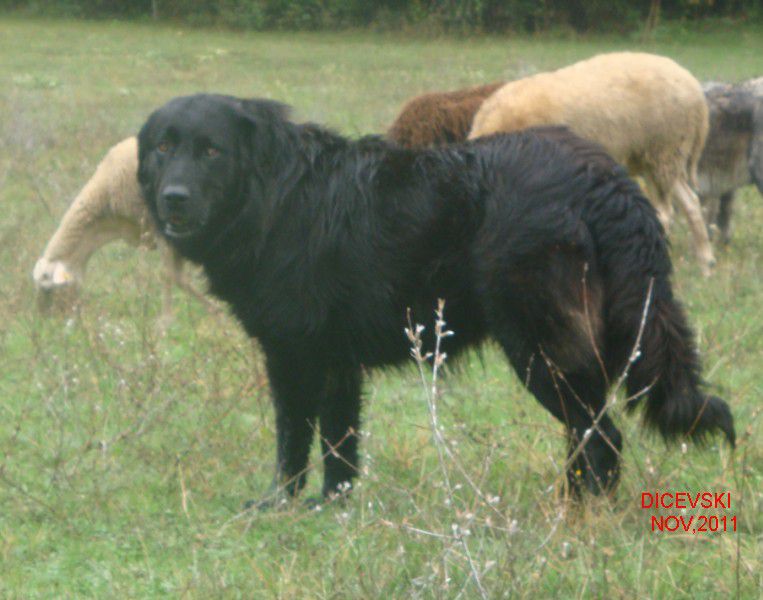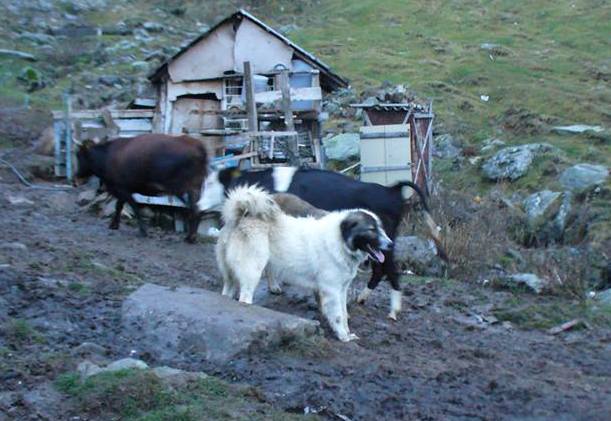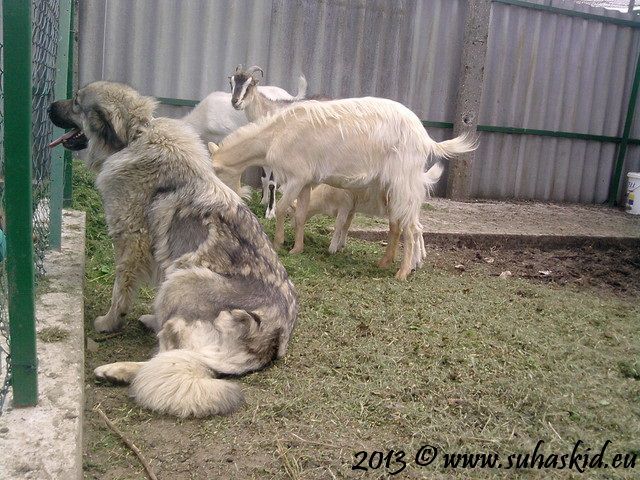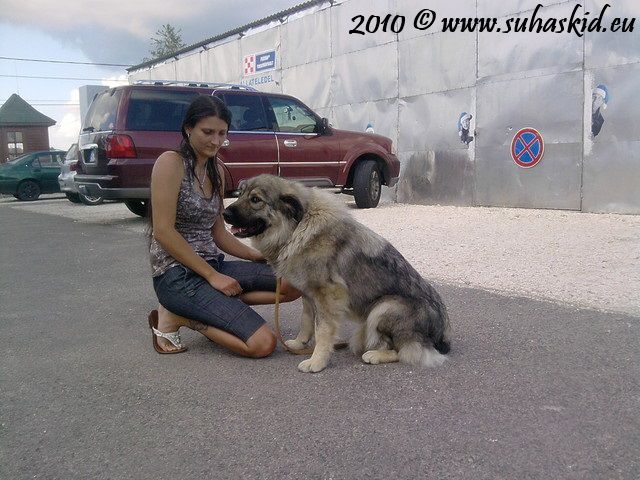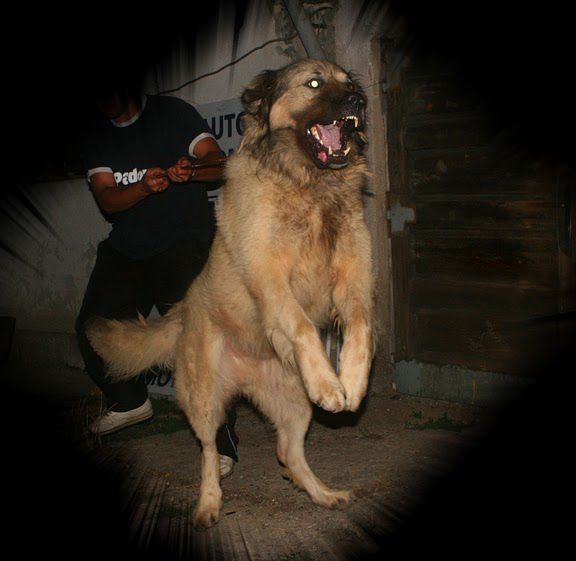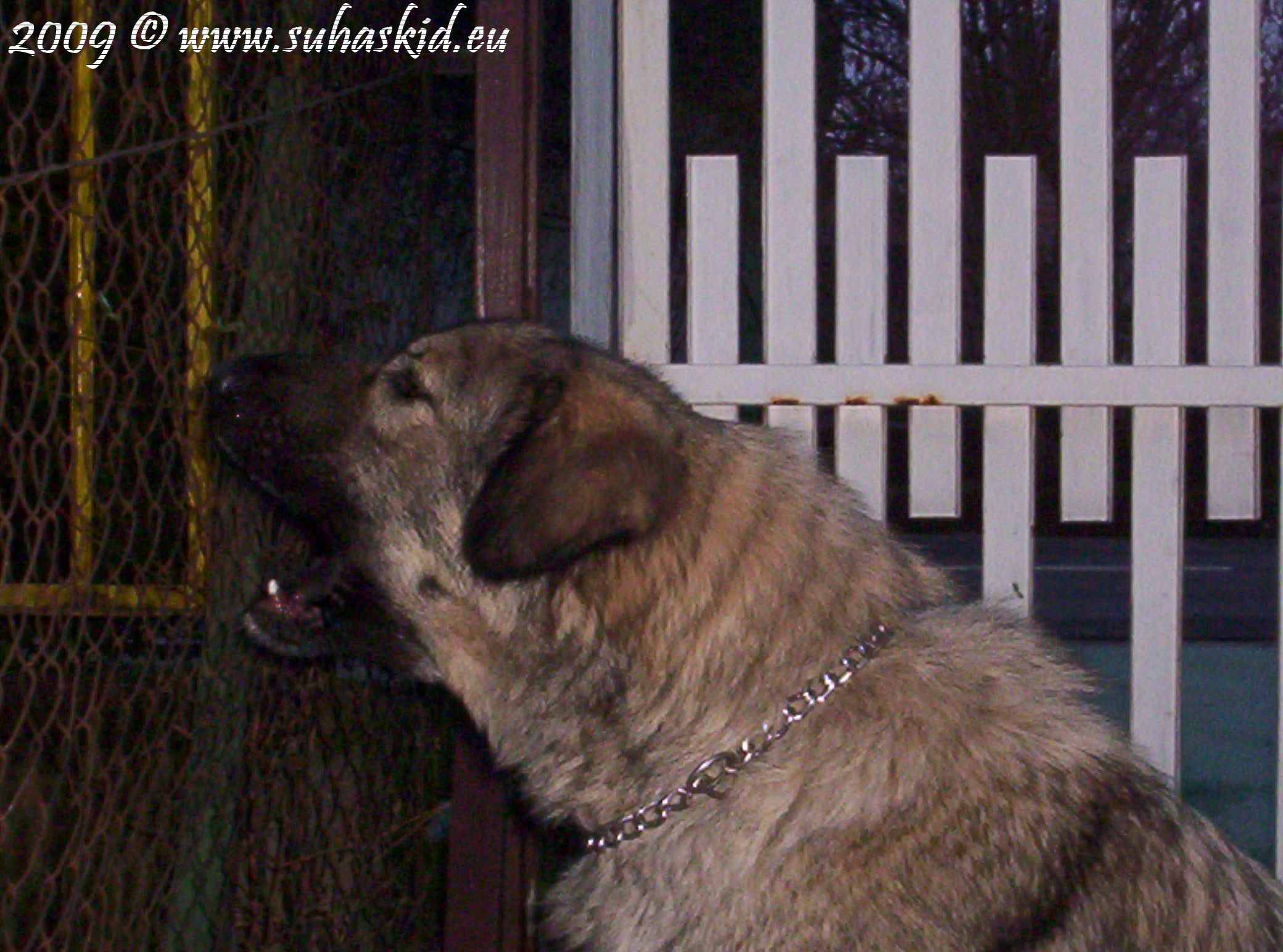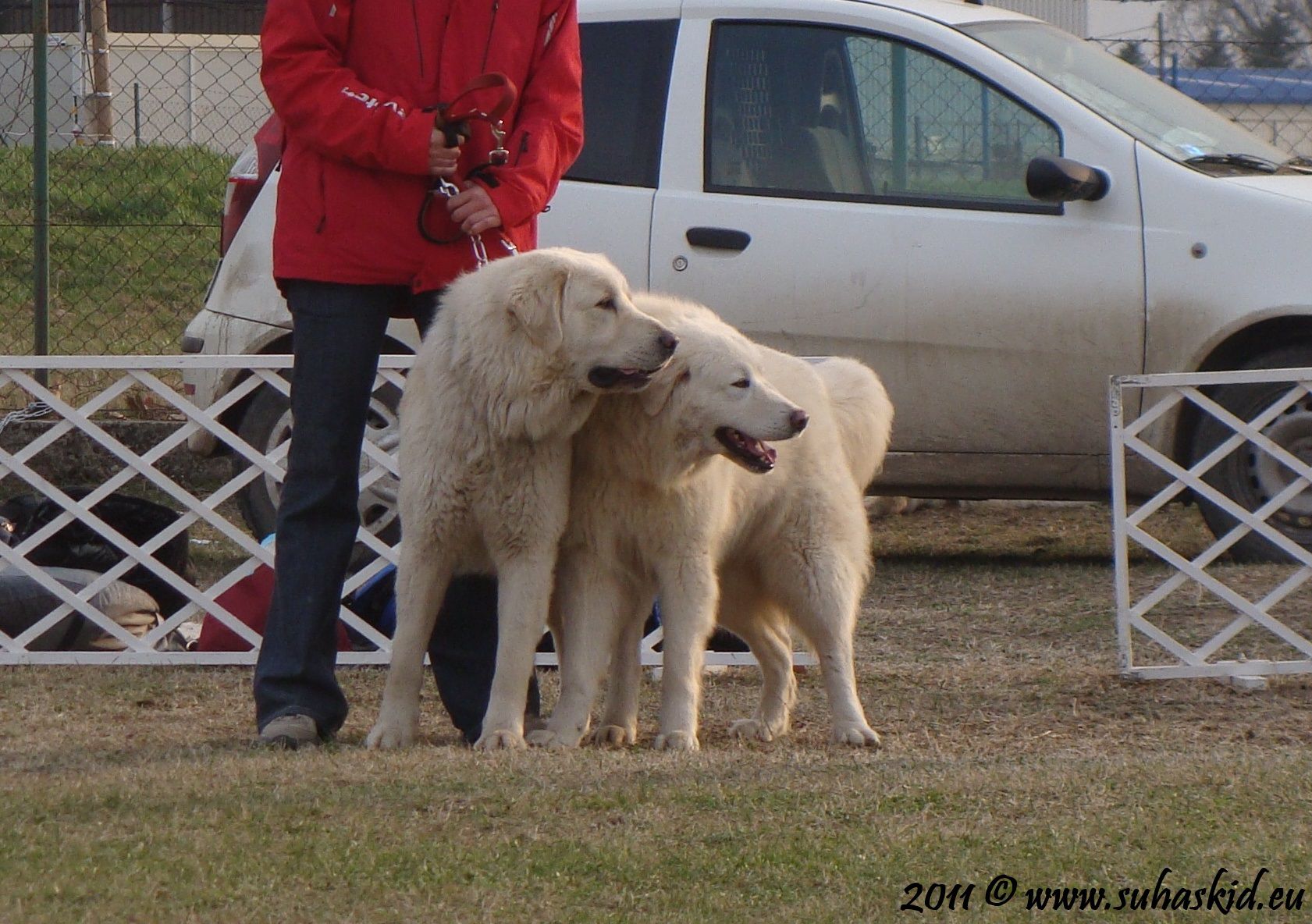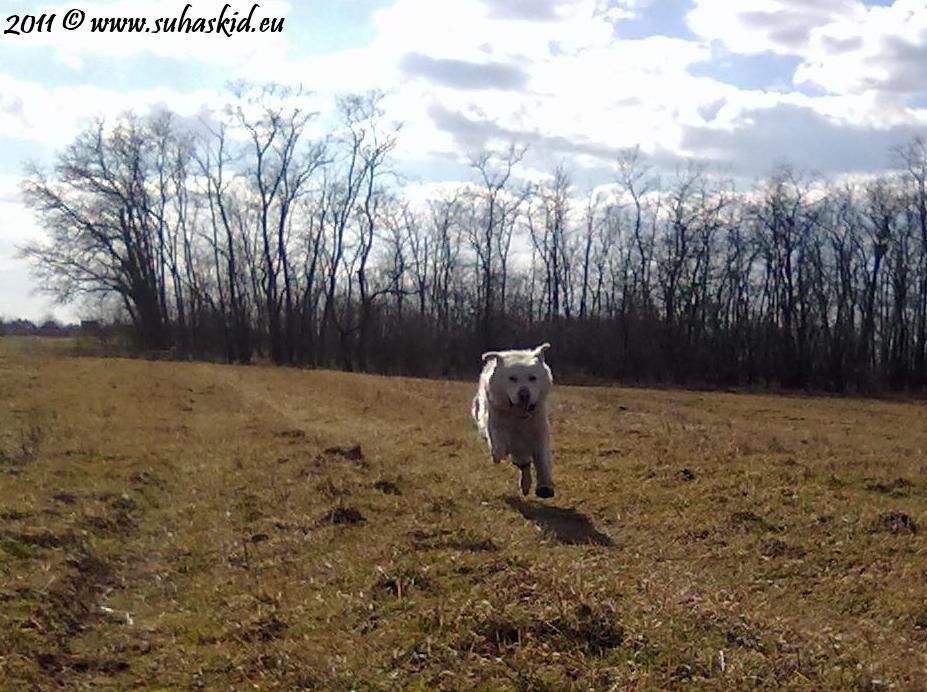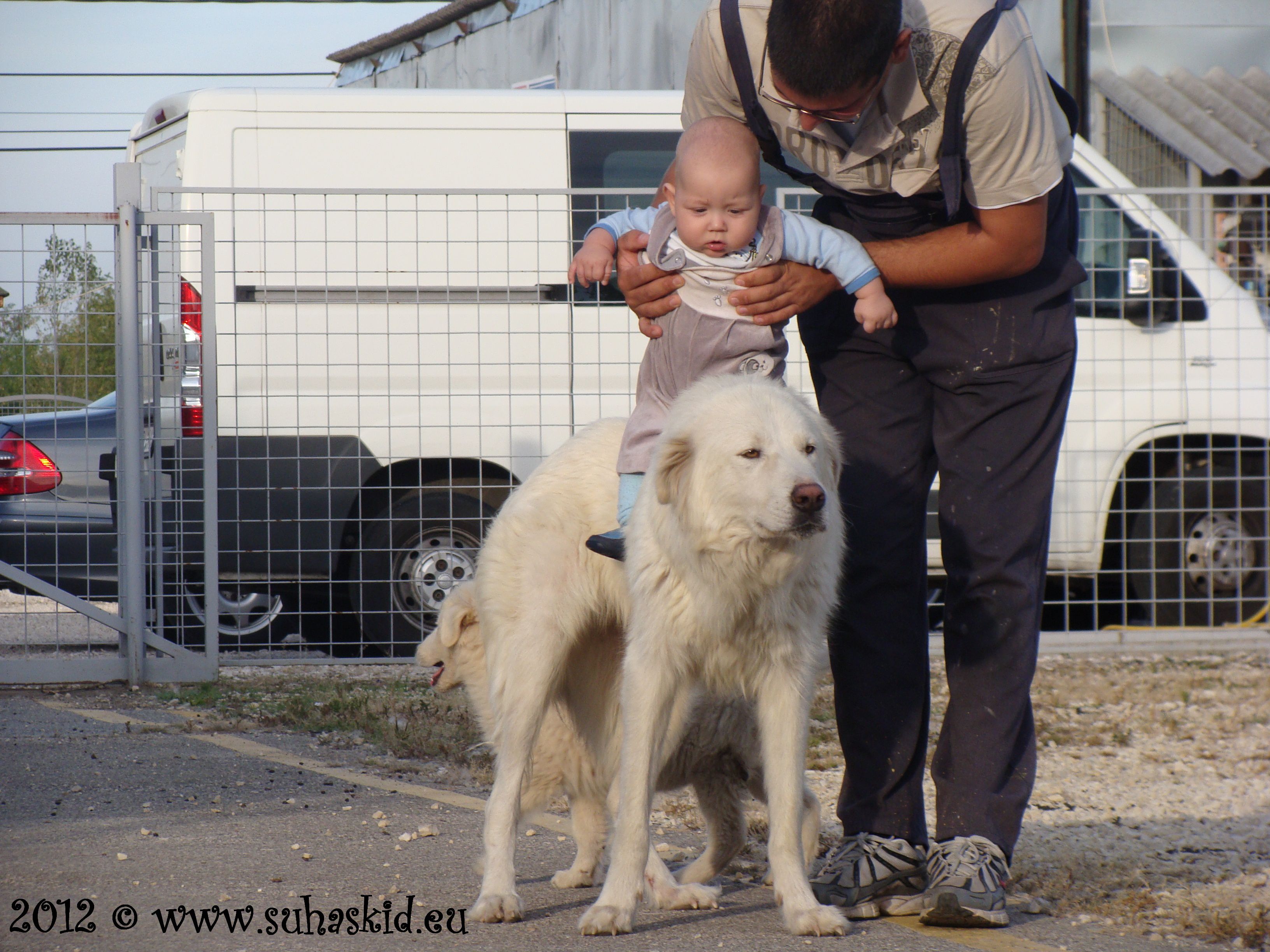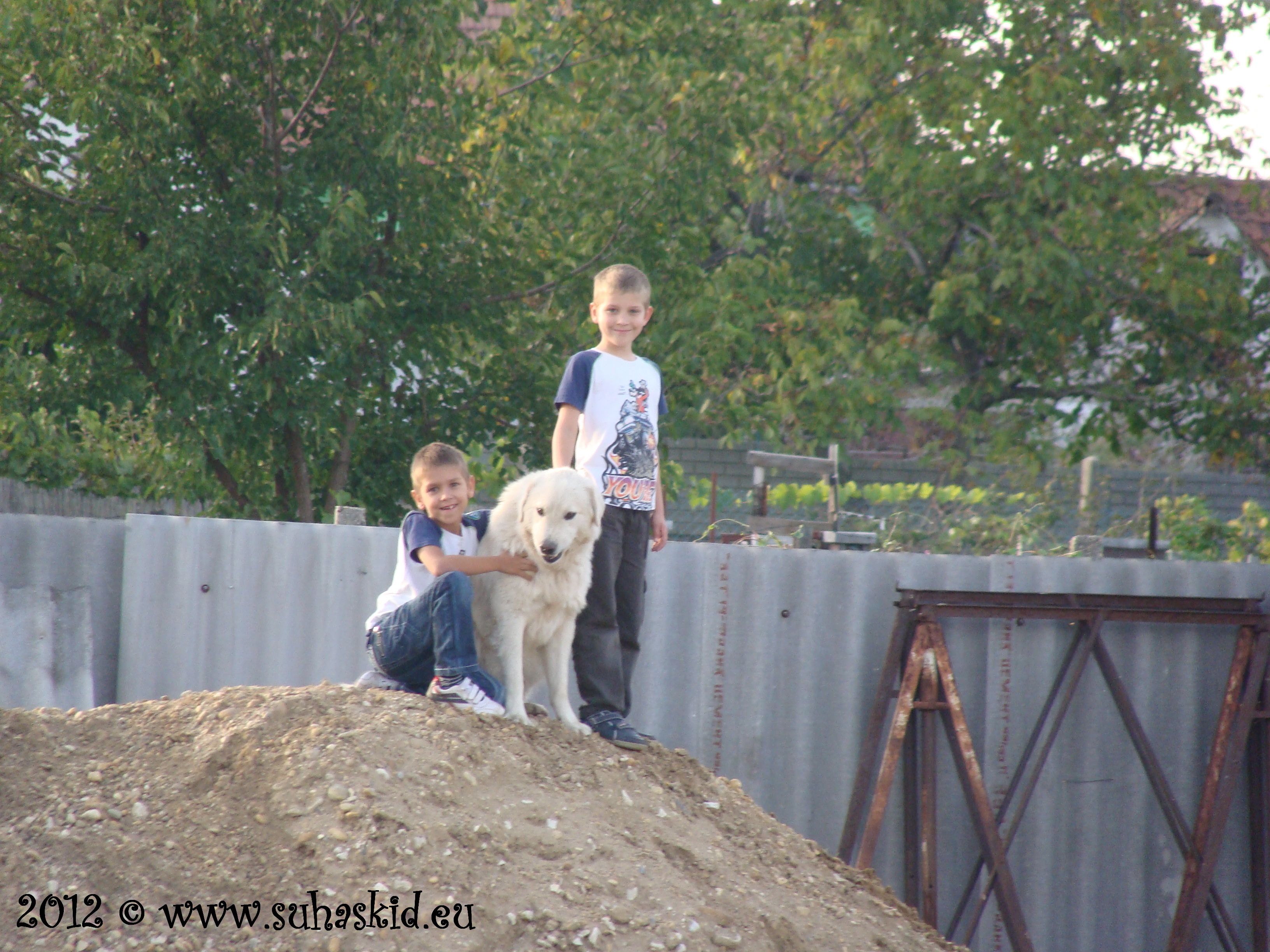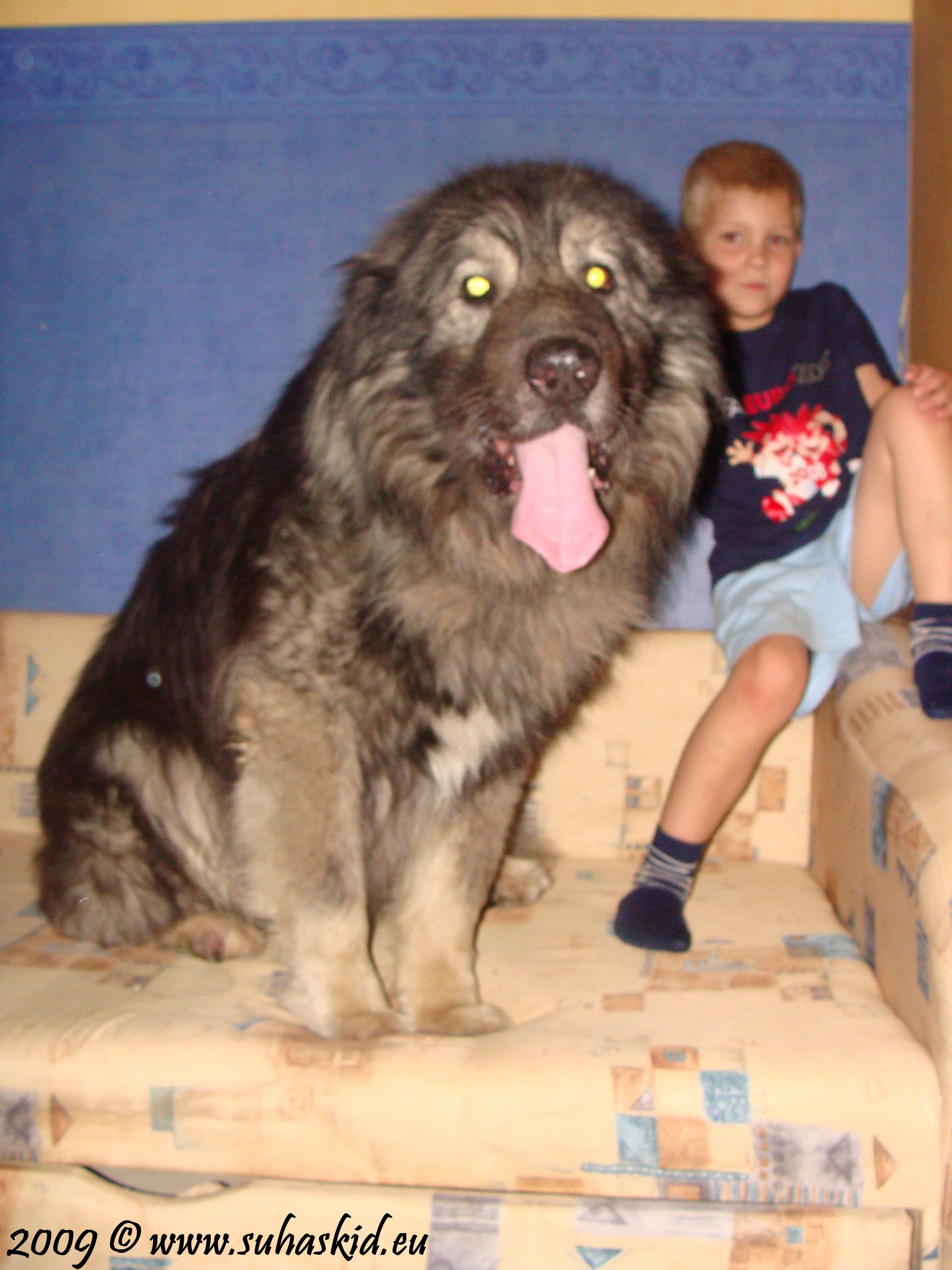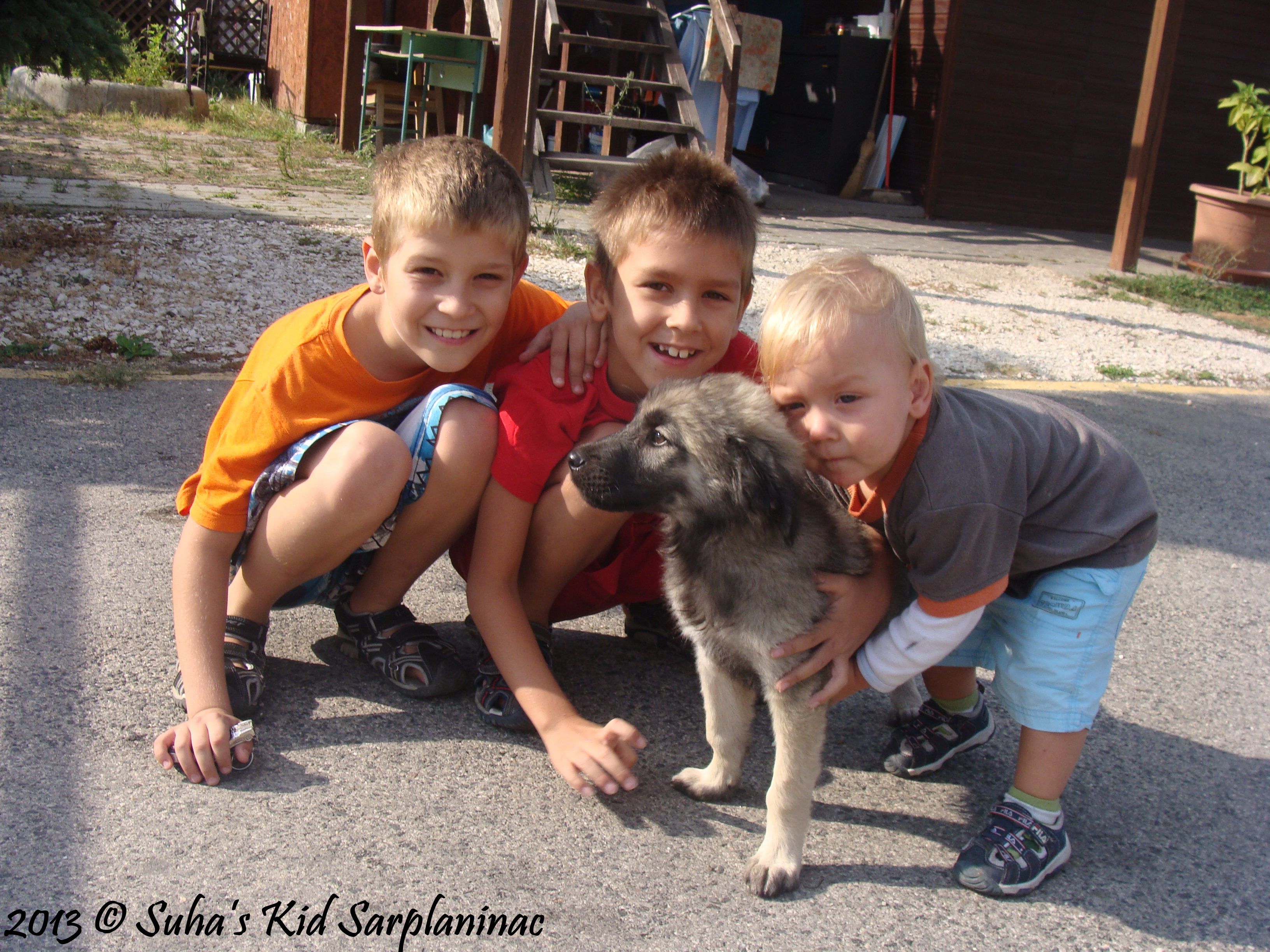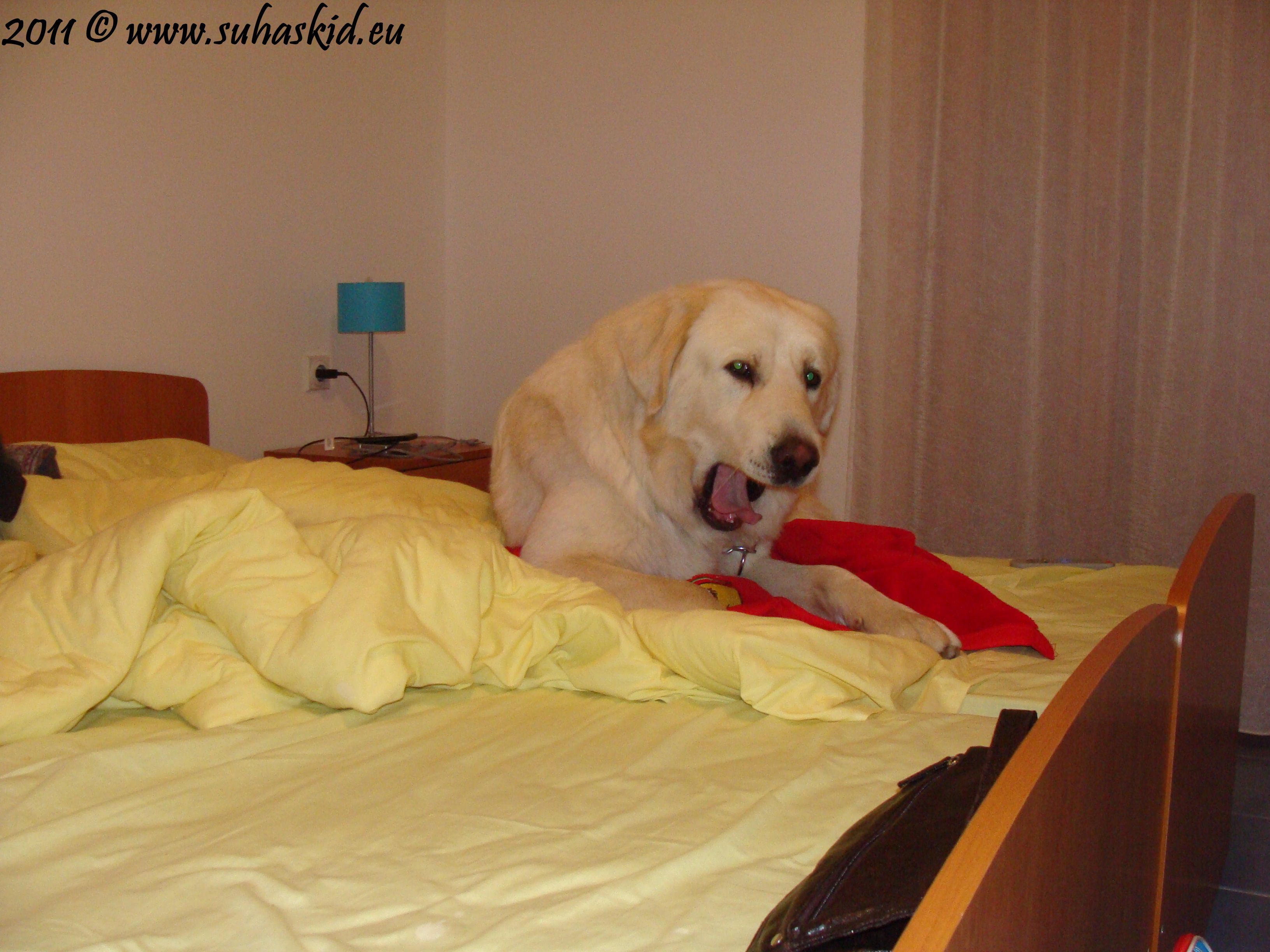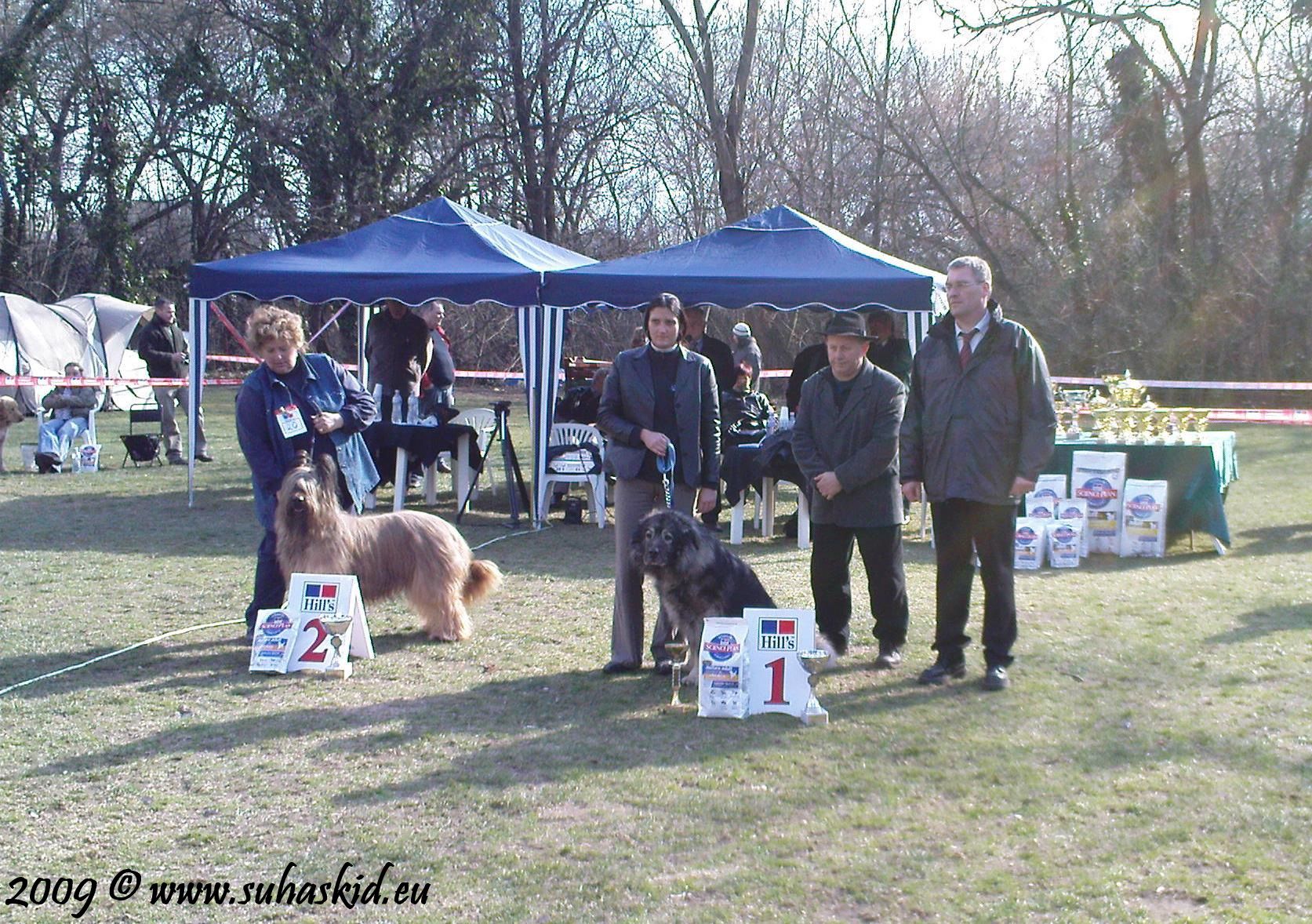
FAQ about the Sarplaninac
What is the "Livestock Guardian Dog (LGD)"?
These dogs originated in Europe and Asia, where they have been used for centuries to protect livestock from predators. Each breed was developed based on the needs of the Shepherd, the area, climate, predators etc all of which attributed to the individual breeds temperament, conformation, coat, behavior and character. There are a large number of LGD such as the Anatolian, Kangal, Great Pyranees, Maremma, Tatra, Central Asian Shepherd and many more.
What is a Sarplaninac Dog?
The Sarplaninac dog is a sheep guarding breed that originated in the remote mountain regions of Serbia. Made to protect livestock and personal property throughout the centuries, they were selected mainly for their working abilities and their temperamental soundness.
The history of the Sarplaninac dog is very long and not very clear. Unlike the modern breed of dogs, the Sarplaninatc breed has been preserved unchanged throughout the centuries.
There are many theories in existence of how and when the Sarplaninac dogs came to inhabit the mountain region of South Serbia.
One of the theories is that the Sarplaninac dog originated form the ancient MOLOSSER sheep dogs of ancient Epirus. These are ancient Illyrian Tribes that lived in the Balkan Peninsula. It is believed that the Molosser dogs developed from the so called "untamable Tribetan Hounds" whose ancestors are known to be the Tibetan wolves.
Sarplaninac dogs today display the uniqueness of their physical and temperamental characteristics thanks to the shepherds with whom they live. Through the centuries, shepherds from the Sara, Korab, Bistra and Kopaonik Mountain ranges, selected only those dogs that were capable of efficiently protecting livestock. With their harsh living conditions, which are worsened by the presence of large predators such as wolves and bears, which Srbia is known to have in large numbers.
The shepherds needed dogs that could be left alone with the flocks in the mountains for several days; and be trusted to make the right decisions.
Sarplaninac dogs got their full public and international recongition as a unique breed back in 1939 when they were registered with FCI (Federation Cynoloqugue Internationale). At that time, they wre registered as Illyrian sheep dogs, under #41. In 1957, at the instigation of the Yugoslav Cynological Association, their name was changed to Yugoslav Shep-dog SARPLANINAC.How do you pronounce the name Sarplaninac?
The most common way to pronounce the name is Shar-pla-nee-nac or Shar-pla-nee-natz.
What is the name yet of Sarplaninac?
Sar Planina, Illyrian Sheepdog, Macedonian-Yugoslav Shepherd Dog - Sharplaninec, Charplaninatz, Yugoslav Shepherd Dog, Illyrian Dog, Yugoslav Mountain Dog, Ovcarski Pas Srbije I Crne Gore, Sarpie...
How big to they get?
From the UKC breed standard: Height at maturity, measured at the withers is 24 inches or over for males and 22½ inches or over for females. Mature females in good working condition weigh between 66 and 88 pounds. They are regarded as medium sized guardian dogs. Various breed standards do mention different heights /weights. Most Sarplaninac are heavier than what the UKC breed standard mentions. Our Males average between 100-125 lbs and females between 88-98 lbs.
From the FCI breed standard: Weight : Males in good working conditions: between 35 and 45 kg, females between 30 and 40 kg. Height: The average height at the withers is 62 cm for males and 58 cm for bitches. Males under 56 cm and bitches under 54 cm are not eligible for breeding.
What colours are allowed?
The most fashionable color of the sarplaninac is green gray or metal gray and dark grey. No other color is accepted at the army's famous nisi breed. The original color of the sarplaninac has a large variety, that professor Pavlovics did not leave out of consideration in his standard.
BROWN, CHOCOLATE
There are several types?
Under Construction...
How long does a Sarplaninac lives?
They can live up to 10 - 14 years.
My Mexi lived is 15,5 years...
What about climate?
The Sarplaninac originate in an inland mountain climate. Due to their good quality coat they can withstand very cold temperatures. They do not do well in extreme hot climates, however can handle quite a large temperature range.
They keep their double coats all year long, which actually keeps them warm in winter and cool in the summer. Although the fact is they do better in colder climates.
What about shedding?
They do shed. Once a year they generally blow their coats, still keeping enough of the undercoat.
On shedding combing...
Must to cut the coat in the summer?
No! NO! They are kept year-round in their bilayer coat, whose function is to be kept warm in the winter, while cooling them in the summer. Mow to reach the target opposite. The dog will not have less heat than during the fur and before they get heat stroke because there is nothing to protect them from the warm.
They sould be bathed?
Theirs coat great feature, that of the self-cleaning! So bathing is not necessary unless a specific need to do so for some reason. For example, prior to dog show, but on this breed is not very usual.
What is they temperament like?
Sarplaninac dogs selected for breeding must have a calm and even temperament. They are highly protective of his family, his kids, his home and his stock and have a moderate prey instinct. They are generally devoted to one person; and should be loyal to all members of the family. Naturally wariness of strangers and incorruptibility is one of their most important characteristic traits. Knowing the characteristics of Sarplaninac dogs, it is very important to start socialization at an early age. They should become experienced in recognizing different situations for what they are. They are free thinkers, not very obedient or subservient. They can be canine aggressive, to dogs they do not know. They are intelligent dogs, good at problem solving and have an innate survival instinct. These dogs are large dogs and physically very powerful. You need to understand that consequent, clear responses from you are required. There should be zero tolerance for any behavior that may be inappropriate. From the UKC: Despite being slightly smaller than many other livestock guarding breeds, the Sarplaninac is characterized by extraordinary strength and large teeth, making it a formidable adversary of predatory animals. This breed has a typical livestock guarding temperament: highly intelligent and independent; devoted to family members and wary of strangers; calm and steady but fearless and quick to react to perceived threats.
Do Sarplaninac bark a lot?
One of the integral parts of guarding behavior is barking. The Sarplaninac will bark at anything he senses to be out of the ordinary or in any way threatening. Many livestock guardian dogs bark at intervals, especially during the night, to warn predators that a dog is on duty. If you have close neighbors, it is a very good idea to provide them with information about LGDs so that they understand how the dogs work, and what they do to protect the stock. The Sarplaninac is not regarded as yappy or excessive barkers.
Should I get male or female?
Difference between males and females is very obvious, phenotypic as well as in temperament. As previouly explanined, males are larger and heavier in bones. While females are noticably ligher, the sexual demorphzum could be accredited to their roll as flock guardians. Lighter females are constantly on the move, checking their territory for any possible danger, while males seem to be preserving their energy for the actual confrontation with predators of any kind. Since most of the predators are nocturnal, females being alarm barkers, could be a nuisance if left out side. Even in urban surroundings they will preserve their natural instincts, in other words they will bark to alarm you of anything approaching their territory. Both sexes are equally devoted to the family, and territorial. Two males can live together, with the exception that they should be separated if any of the females are in heat.
Do they dig?
Yes, they love to dig holes to lay in in the cool ground on warm summer days.
Do they eat much?
Depending on their level of exercise, but according to their overall size, they eat amazingly small amounts of food. For example, a 130lbs. male whith moderate daily activity will be satisfied with only four cups of food. Of course a growing puppy and lactating female will have a greater need to intake more food. Furthermore, special attention has to be paid that Sarplaninac dogs are fed only with quality, well-balanced food that provides them with necessary nutrition. If you are intested in the breed you should check with the breeders and see what they recommend. Supplementing dry dog food with cooked meat, goat milk, and eggs in their natural state, should be a good way of making sure that necessary nutrients are added to their diet.
What is their energy level?
Being a sheep-guarding breed, Sarplaninac dogs were selected throughout the centuries to be calm, so that they may move swiftly among the sheep without causing any unnecessary commotion. They might appear as though they are not engaged in high level activities, as some sheep herding dogs are, but unless you have enough time to provide them with long walks, and allow them to relieve their excess energy, they could be very difficult and hard to live with.
What about obedience training?
This breed is highly intelligent and very independent. They are fast learners, and they never forget what they have been tought. Because of their intelligence and independence, obedience training will not be an easy task. This is not to say that by applying the right principles, you would not be able to achieve very satisfactory results. These dogs have been, and are still being used by the Yugoslav Army for a wide variety of duties. It is very important to note that only positive reinforcement methods will get you results.
Does the Sarplaninac make a good family pet?
Are Sarplaninac good with the childrens?
Yes, Sarplaninac dogs are very gentle with the kids that they grow up with, or the kids that grew up with them. You have to keep in mind that Sarplaninac are naturally protective; and from an early age should be exposed to different ways that kids are playing amongst themselves. In this way, you will avoid having the dog misread certain play activities, and come to the apparent aid of your child. However all that is easily avoided if the puppy grows up as a member of the family, and takes part in all family affairs.
Most sars are great with children, however as a young pup they may be rough and playful and due to their size can easily knock over a smaller child. When walking on a lead they can easily drag a smaller person unless well trained. Some can become rather food aggressive and will need to be watched. We believe that no small children should be unsupervised around any dog (large or small)!
Are they good with other dogs?
Sarplaninac dogs will rarely have any problems with the dogs they grow up with. Occasionaly disputes are bound to occur, but are nothing to be either worried or concerned about. Being very territorial, they will be naturally aggressive to strange dogs that invade their territory. Outside their territory, if properly socialized from puppy-hood, they should not present any threat to non-aggressive dogs.
Do we need a fence?
YES. Secure fencing is a must to safely contain your livestock guardian dog. Most guardian dogs like to expand their territory and will roam. This can be a liability should they hurt someone, be involved in a motor accident or bite someone. A free roaming guarding dog/pet is NOT an option.
Are they good house dogs?
They are very good house dogs, providing that you are a good owner, by exercising them regularly. You must keep in mind that originally they would cover great distances following the flock in a course of a day, and that might not sound as a high impact exercise to you, but still you have to have enough time to allow Sarplaninac dogs to relieve their excess energy. "A bored dog is a bad dog" is a general rule to follow.
Where I can show my dog?
The Sarplaninac Breed has been recognized by FCI since 1939. In the United Stated, ARBA has been first to provide showing opportunities. Since January 1996, UKC has recognized Sarplaninac, and is willing to provide the opportunity to show them. Just recently SKC has put the beed in their line-up. so you will have plenty of opportunities to enjoy dog showing sport with your dog.
Do Sarplaninac have any health problems?
Like all large breeds hip dysplasia and other structural problems can occur. Bloating can also be an issue with any deep barreled breeds. They can be sensitive to anesthesia, which should be administered with care, proper weighing and monitoring. Care needs to be taken with flea and tick sprays. In general there are no specific breed health problems. Most of the problems that are found are primarily problems found in most large breed dogs.
Why would you not reccomend a Sarplaninac dog?
If you require instant, unquestioned obedience to commands by your dog.
If you do not have a large, fenced in yard, or securely fenced pastures.
If you cannot commit to the complete life span of the dog (up to 14+ years.)
If you battle to handle dog with a dominant nature.
Believe in feral LGD dogs.
We have tried to give you basic information on what Sarplaninac dogs are, and what you can expect from them. Buying and dog is a great responsibility. Matters have to be weighed and discussed many times before reaching the decision. Therefore, take this as only a beginning of your research on Sarplaninac dogs; and if such facts as, the need for attention, exercise, daily grooming, nocturnal barking, independent thinking, and size do not conflict with your life style, the only thing that we can do is welcome you to the growing family of Sarplaninac fanciers.
